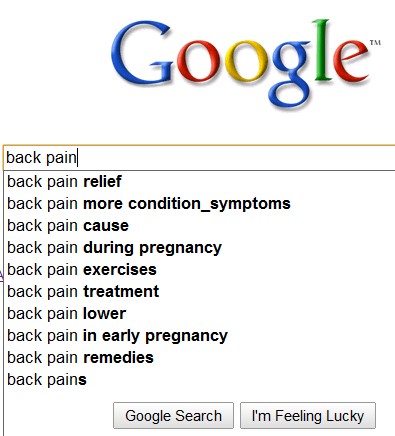Use Google Webmaster Tools
There’s no excuse not to use this amazing tool. These are some of the things your can do with it:
- Submit a sitemap of your site so Google knows what pages they should index.
- Tell Google what is the canonical URL you want to use (site.com or www.site.com).
- Detect issues with duplicate title tags and meta descriptions.
- Find 404 error pages.
- Detect crawlability issues.
- See a list URLs restricted by robots.txt.
- See the most common keywords people find your site through.
- Get a list of links pointing to your site.
- Tell Google how they should index your images.

Steal Your Competitors’ Keywords
These are some of the ways you can do it:
- Look at the keywords they use in their title tags.
- Look at the keywords they use to link to their “money pages”.
- Some webmasters are dumb enough to include their money keywords in their meta keywords tags. Take a look at these but keep in mind that smart SEO people won’t do this and they might actually put bad keywords in the meta keywords tag to get other wannabe SEOs to use them.
Pay Attention to Your MozRank
SEOmoz has a tool called LinkScape that calculates your MozRank. MozRank is a great metric that evaluates the quality of your incoming links, something that most link assessment tools don’t do (they focus on quantity only).
If you have more links that your competitors but they’re ranking above you, you should take a look at your MozRank and theirs; maybe they have fewer links than you but they are BETTER than yours.
If your MozRank is higher than theirs, you have more links and they rank above you, then there’s probably an issue with the lack of keywords in the anchor texts of your incoming links.
Get a Double Listing
A double listing (or indented listing) can increase the click-through-rate (CTR) to the roof. How you can get a double listing?
- You need two pages of your site on the same page of Google results. For example, let’s say you have page A and page B. Page A ranks #4 on Google for “affordable leather shoes” and page B ranks #15 on Google for the same keyword. You need to take page B from position 15 (second page of Google) to position 10 (first page of Google) so pages A and B are on the first page of Google.
- Perform this Google search to find out what 2 pages Google finds most relevant to a given keyword: site:yoursite.com [keyword].
- Now that you know what 2 pages are the most relevant for that keyword (according to Google), use the SEO Rank Checker Tool to find out the Google rankings for those pages.
- Optimize pages A and B for your keyword. Link to page B from page A and vice versa using the keyword you want to rank for in the anchor text of the links.
- Get some keyword-rich links from external sites to pages A and B.
- Voilá! Your listing will look like this one:

Use Google to Get Keyword Suggestions
Start typing your main keyword in the Google search box and get ideas for keywords.

Fix Canonical URL Issues
If you can access your site by typing “site.com” and “www.site.com”, Google will see that as two different sites with the exact same content and that can hurt you a lot. You need to create a file called .htaccess with these three lines and put it in the root folder of your site:
RewriteEngine On
RewriteCond %{HTTP_HOST} !^www.site.com$
RewriteRule (.*) http://www.site.com/$1 [R=301,L]
Warning: unless you know what you’re doing, have someone else do this. All servers are configured different and you don’t want to mess with your .htaccess file.
What To Do If You Ever Get Penalized By Google
First of all, stay away from spammy tactics so this never happens. But, if you’ve been a bad boy/girl, this is what you should do:
- Find out why it happened. Read Google Webmaster Guidelines and find out what you’ve done wrong.
- Fix it.
- Ask Google to reconsider your site. Admit to everything and don’t pretend you didn’t know what you were doing. Promise that you won’t do it again.
- Don’t do it again!

Create a Google Sitemap
Use this tool: GSiteCrawler.

Learn the 4 Truths of Links
- Links from authority sites (e.g. CNN) are worth more than links from average sites (e.g. your cousin’s skating blog).
- Links from relates sites are worth more than links from unrelated sites.
- Links with your keyword in the anchor text are worth more that links that say “click here” or “read more”.
- Link quality is WAY more important than link quantity.

